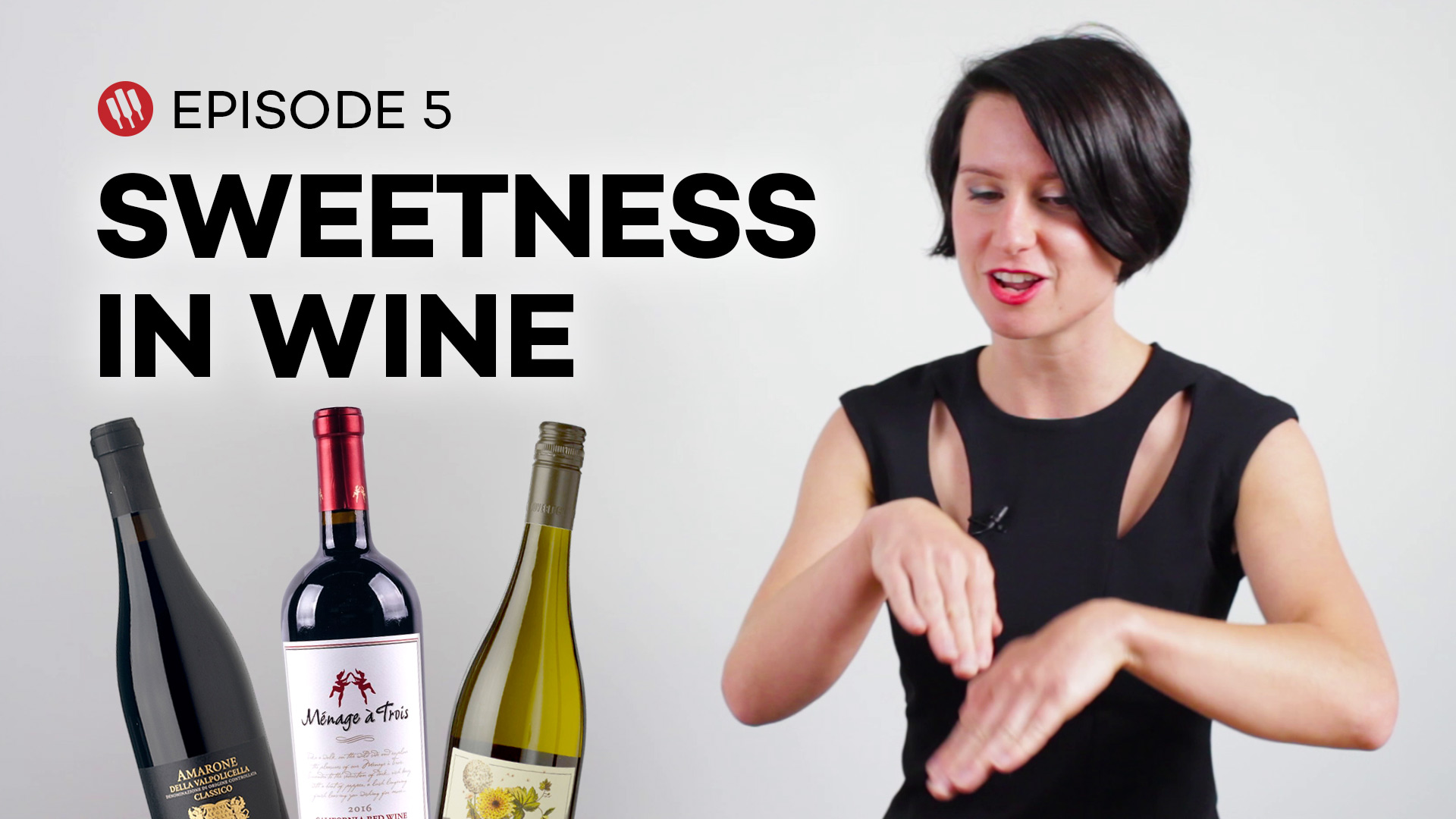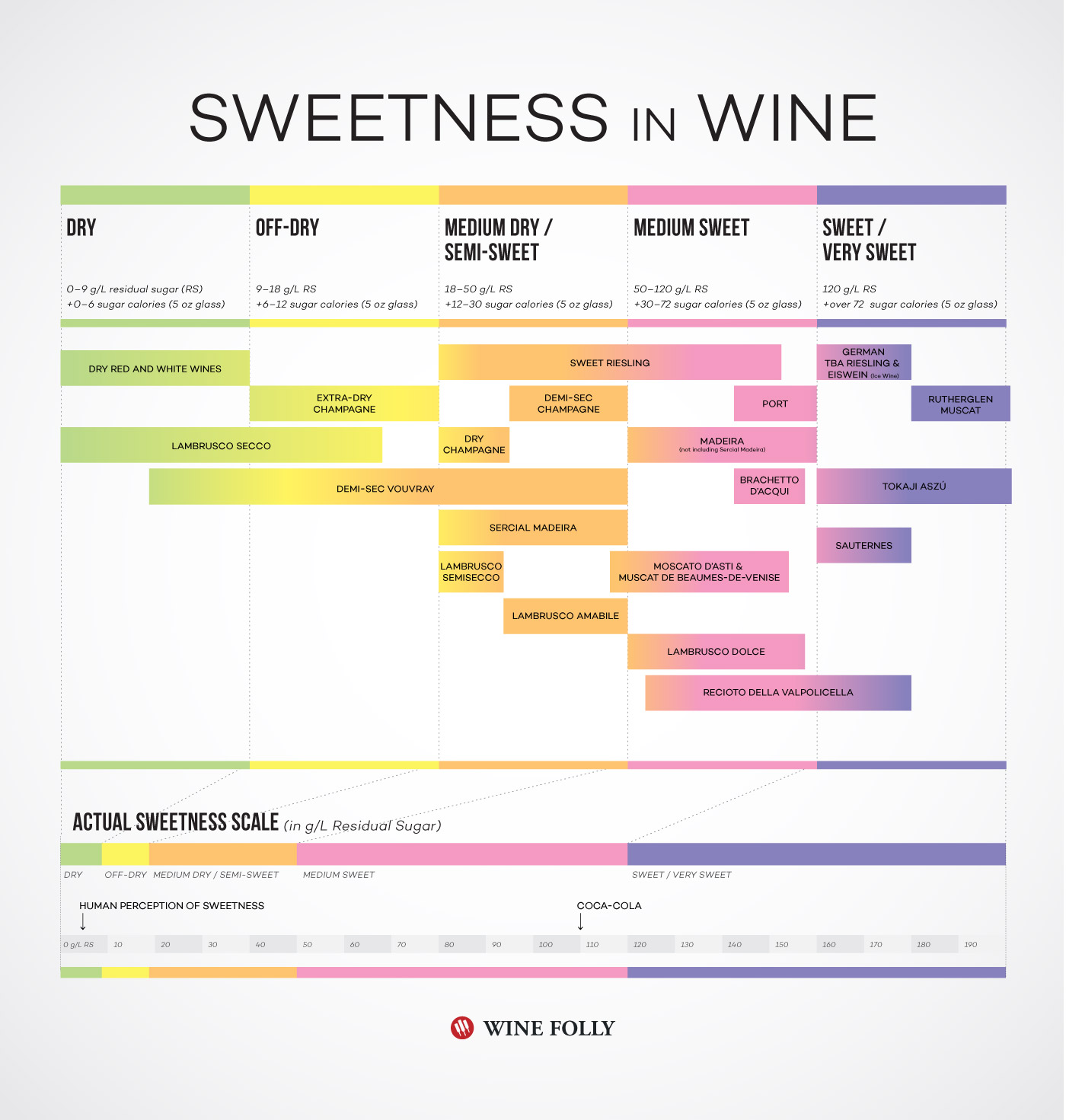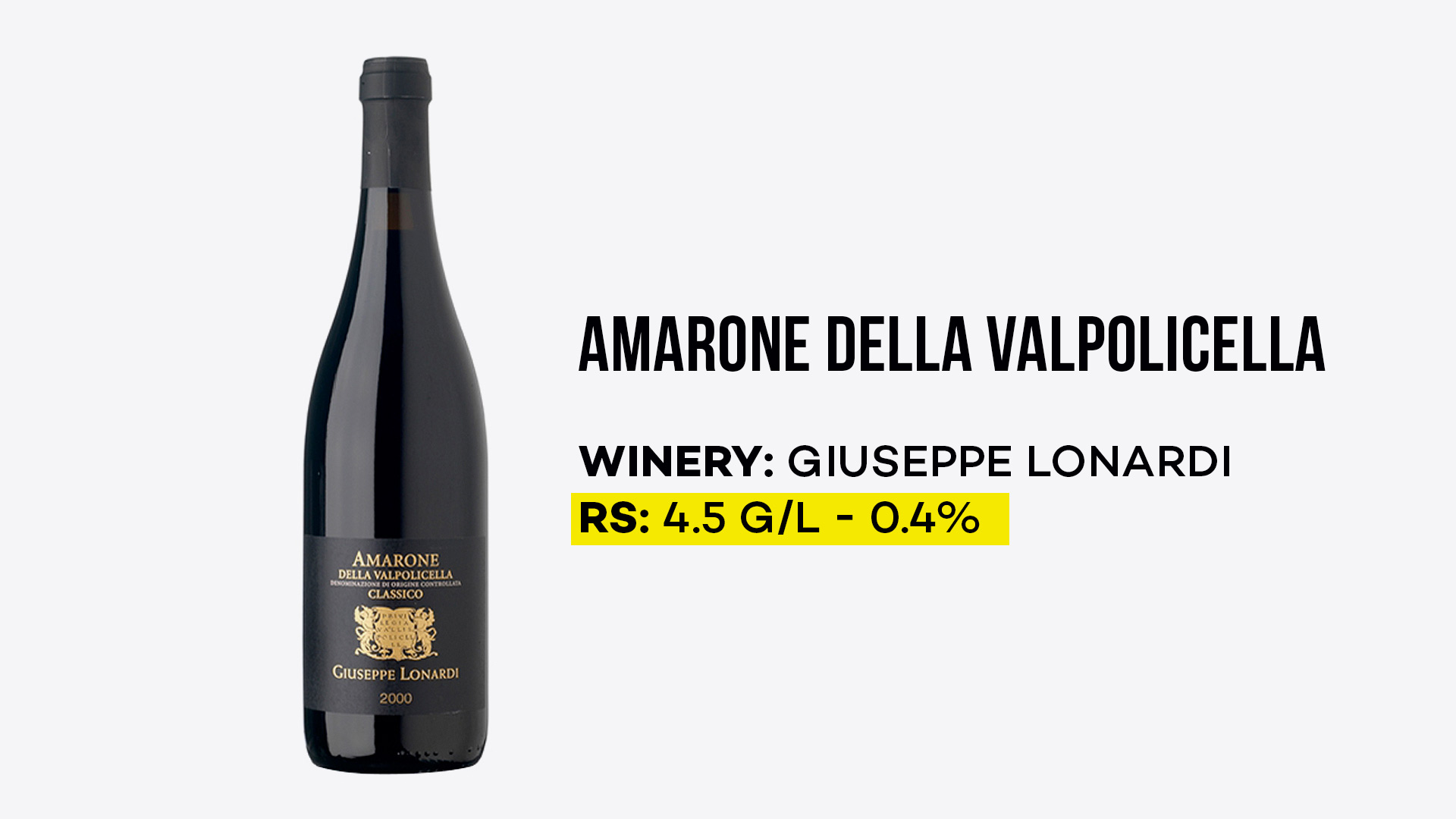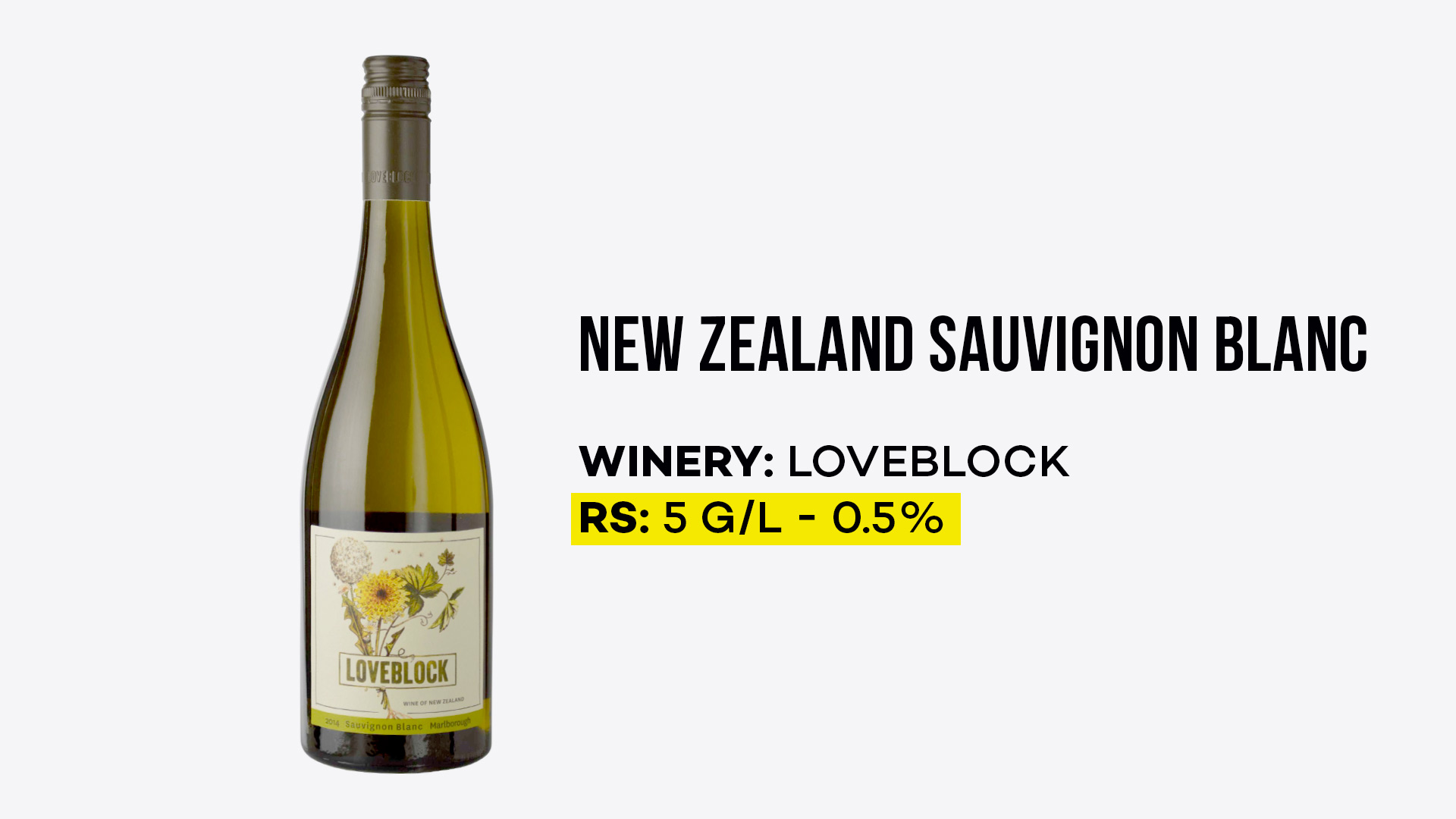Surprising facts about wine sweetness you don’t want to miss!
This week, Madeline Puckette jumps into one of the most misunderstood topics in wine.
Wine Sweetness
What is wine sweetness and where does it come from?
Most sweetness in wine comes from natural grape sugars leftover after the fermentation has stopped. Wine people refer to it as “residual sugar,” or RS for short. Wines without sweetness are called “dry” wines.
Common knowledge is that sweetness is determined by the type of grape (Moscato, Riesling, Gewürztraminer, etc). However, in most cases, sweetness is actually controlled by the winemaker!
The winemaker is the one who chooses to stop the fermentation before all the grape sugars have been eaten by the yeast. Pow! Sweet wine!
Of course, the market also dictates which varietal wines have sweetness. For example, in the US, most wine buyers think of Riesling as a sweet wine. Thus, winemakers tend to make Riesling sweet because that’s what the market wants.
That said, if you go over to Germany (the Riesling capital of the world!) and pick up a decent German VDP Riesling, you’ll discover they’re actually quite dry!
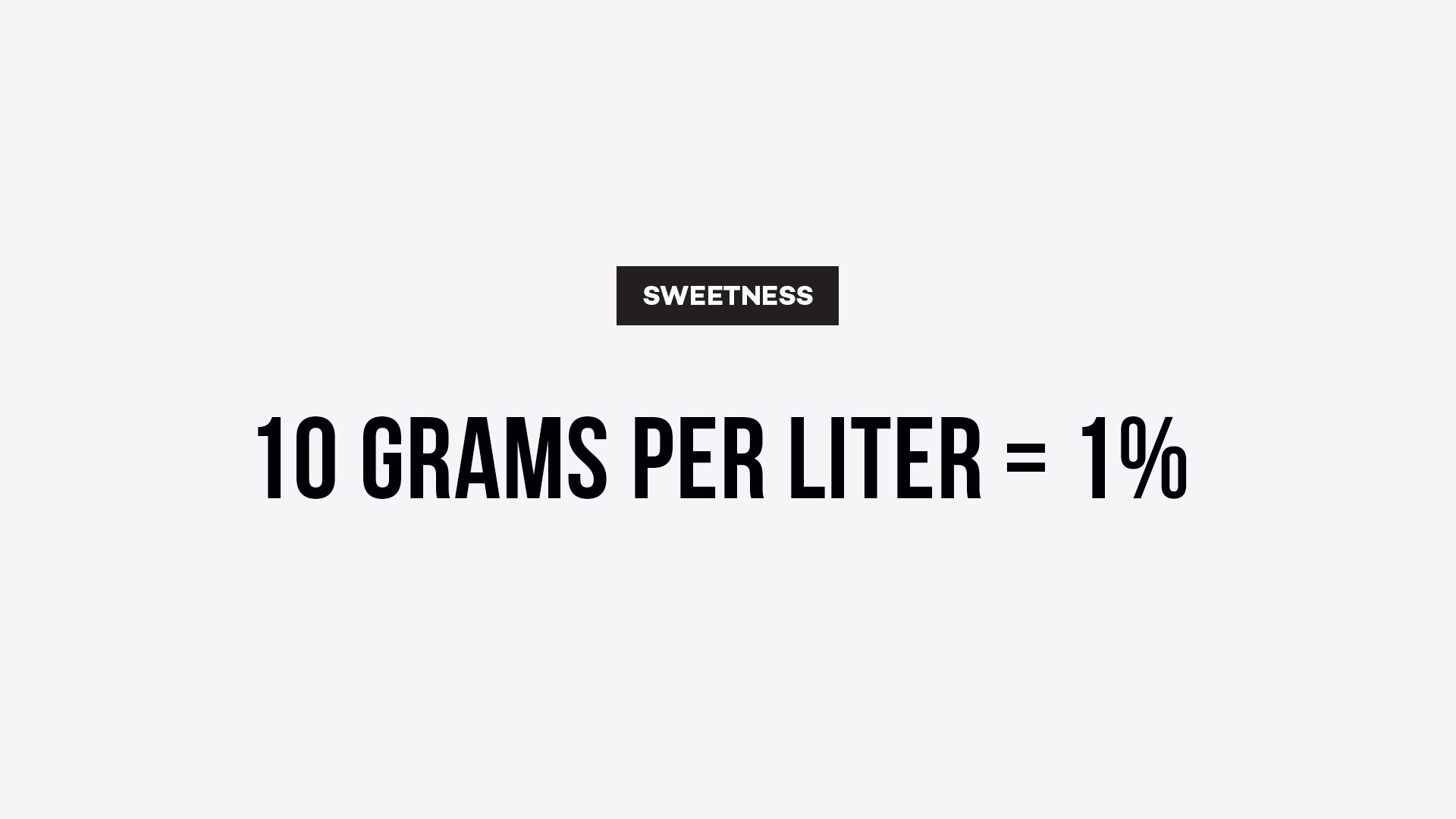
What Are the Sweetness Levels in Wine?
This is where things start to get fuzzy. There’s actually a huge range of sweetness levels in wine.
In the Wine Folly book, we split sweetness up into 5 categories:
- Bone Dry Wines
Wines with less than 1 g/L of residual sugar (RS) or 0.1% sweetness. - Dry Wines
Wines with 1–17 g/L of RS or up to 1.7% sweetness. - Off-Dry Wines (aka “semi-sweet”)
Wines with 17–35 g/L of RS or up to 3.5% sweetness. - Sweet Wines
Wines with 35–120 g/L of RS or up to 12% sweetness. (These are sweet like Coca-Cola, which has 113 g/L sweetness). - Very Sweet Wines
Wines with over 120 g/L of RS or over 12% sweetness.
Here are a few example wines using a slightly different scale:
We Humans Are Actually Pretty Bad at Tasting Sweetness
It’s true. Our palates have over 26 different receptors tuned to sense bitterness but only one dedicated to sweetness! The common wine drinker can barely distinguish sweetness below 2% or 20 g/L of RS.
So a lot of wines that we think of as “dry” actually have a gram (or three) of residual sugar! At these low levels, sweetness adds body and a more oily texture to wine, which is highly desirable to most wine drinkers.
A Few Examples
Here are a few examples, including wines at all quality levels:
Amarone della Valpolicella is one of Italy’s most coveted red wines. High quality examples of Amarone will easily age over 50 years (when stored properly)!
Surprisingly (for most), many Amarone della Valpolicella range from about 4–11 g/L of residual sugar. They do this to help balance the taste and help the fruity flavors of cherries and chocolate come to the forefront.
New Zealand Sauvignon Blanc wines commonly have over a few grams per liter of residual sugar. Why? Well, this region produces Sauvignon Blanc with such high acidity that a little residual sugar helps counterbalance the tartness of the wine.
The range we’ve seen goes from about 4–20 g/L of RS (so the example above is pretty nominal and dry!). Residual sugar in New Zealand Sauvignon Blanc turns sour flavors of lime peel into lush, tasty notes of passion fruit and gooseberry.
Bulk-made wines are one of the largest users of residual sugar in wines (of all types)! If you look at most value wines in the US market, you’ll see quite a lot of them use residual sugar to make wines taste fruitier and bolder.
This is where the controversy about sweetness in wines really comes from.
Many bulk wines use over 10 g/L of RS, which a trained sommelier can easily identify. Thus, you’ll hear a lot of wine enthusiasts and experts poo-poo RS because they think of it as cheating.
And, in a lot of cases, they’re not wrong!
Is RS the Devil?
If you ask me, residual sugar isn’t the devil. It’s just a tool in the winemaker’s toolkit to make great tasting wines.
Some wines really shine with a few grams of residual sugar. Of course, as with all things: moderation is key!
What’s more important is that we wine drinkers know about residual sugar in wine and fearlessly experiment tasting different wines so that we understand how it works on our own taste buds.
Some will love it, others will hate it. The choice is up to you!

